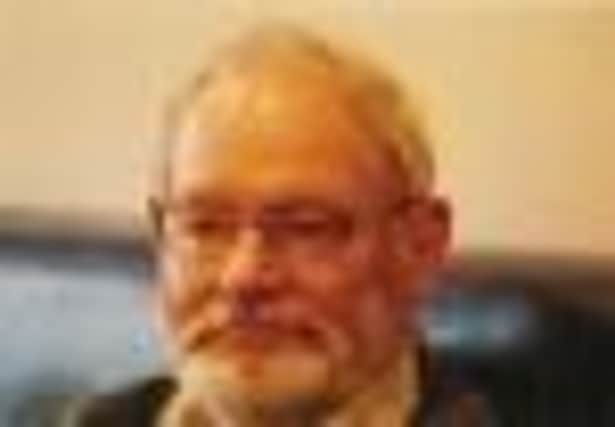Obituary: Jim Ferguson, naval clerk, shopkeeper and aviation writer


Jim Ferguson had an accident to thank for changing his career path and making him an instantly recognisable voice among aviation commentators.
A regular sailor who had served on the Royal yacht Britannia, he may well have remained in the Royal Navy had he not suffered an injury during a naval exercise.
Advertisement
Hide AdAdvertisement
Hide AdIt left him with damage behind his eye and curtailed any progression in the service leading, ultimately, to a decision to channel his interest in military and civil aviation into a full-time job.
He became a freelance aviation writer and was the first point of call for many media organisations around the world seeking his views on aircraft incidents and disasters.
The grandson of a Bolivian tin magnate, he was born in the mansion his grandfather had had built in the Aberdeenshire village of Udny Station. His mother Minnie was mining entrepreneur James Duncan’s daughter and his father, James Ferguson, was a civil engineer.
He spent some of his early years in Orkney where his father was posted, during the Second World War, to help with the Churchill Barriers, constructed to protect the British fleet from marauding German U-boats. The family returned to Tillycorthie when Jim was four and later moved to Aberdeen where he received his primary education at Robert Gordon’s College. There he joined the Sea Cadets, an interest he pursued when he was sent to Gordonstoun in Moray, a school renowned for its regime of cold showers and outdoor pursuits.
He enjoyed his time there and left to join the Royal Navy where he became a clerk. His postings included the Royal Naval Air Station Lossiemouth, then part of the Fleet Air Arm, and Her Majesty’s Yacht Britannia. Years later he would renew contact with his commander on Britannia, Lord Lewin, Admiral of the Fleet, a friendship of which he was most proud.
He followed service on Britannia with a stint on HMS Duncan, on fisheries protection duties off Iceland during the Cod War. His final posting was to the Far East on HMS Bulwark.
It was then, during a naval exercise, that he sustained the injury that affected the nerves behind one of his eyes. It resulted in him being invalided out of the service in 1963 and having to look for new employment.
He bought a retail decorators business in Aberdeen, the Rosemount Drysaltery, learning the ropes as he went along.
Advertisement
Hide AdAdvertisement
Hide AdBut he already had a fascination for military and civil aviation that was about to become the focus of his working life. He had been making models of aircraft and ships all his life – one boat is in Aberdeen Maritime Museum – and when he took over the shop he would work away on them in the back of the property, displaying the finished models in the window among the paint and wallpapers.
Then, with the advent of the oil industry in the North-east and the accompanying air support it required, he saw an opportunity to write about aviation matters.
By the late 1960s he was also a member of the Aberdeen lifeboat crew, giving him an additional perspective on search and rescue.
He began writing specialist articles while continuing to run the shop but eventually decided to bite the bullet and give up the business. Focusing fully on freelance writing, he was a contributor to various national and international publications including Flight International and Rotor & Wing magazines.
He made it his business to cultivate contacts among the helicopter and fixed-wing airline companies and became a well-known figure in Scottish aviation and media circles.
He also wrote The Story of Aberdeen Airport 1934-1984, published in 1984 by Scottish Airports.
A regular contributor to the BBC, his broadcast work expanded and he was often one of the first people contacted for a comment on major aviation incidents.
He was at Lockerbie after the Pan Am flight 103 exploded and was quoted on the 9/11 attacks in New York. More recently he commented on the series of North Sea helicopter incidents, including the fatal crash in 2009 that cost 16 lives.
Advertisement
Hide AdAdvertisement
Hide AdDogged and persistent in the pursuit of stories, he always preferred to be referred to as a writer rather than an expert.
Nevertheless, his voice was heard worldwide on major broadcast channels, including CNN, and only recently an Australian organisation had been seeking his views.
In his spare time he enjoyed hillwalking and air-to-air photography, listening to classical and organ music and reading an eclectic selection of books, including those on military and aviation history.
He was also a life member of the American Naval Institute and a supporter of the Shipwrecked Mariners’ Society and the Royal Naval Museum.
But his major interest, over many years, was Royal National Lifeboat Institution. He dedicated a huge amount of his own time to supporting the charity and had served as lifeboat crew from 1969 to 1984.
He was a life governor of the institution, had been awarded its gold badge and remained its volunteer Aberdeen press officer up until his death.
He is survived by his wife Linda, whom he married in 1966, and his brothers David and John.